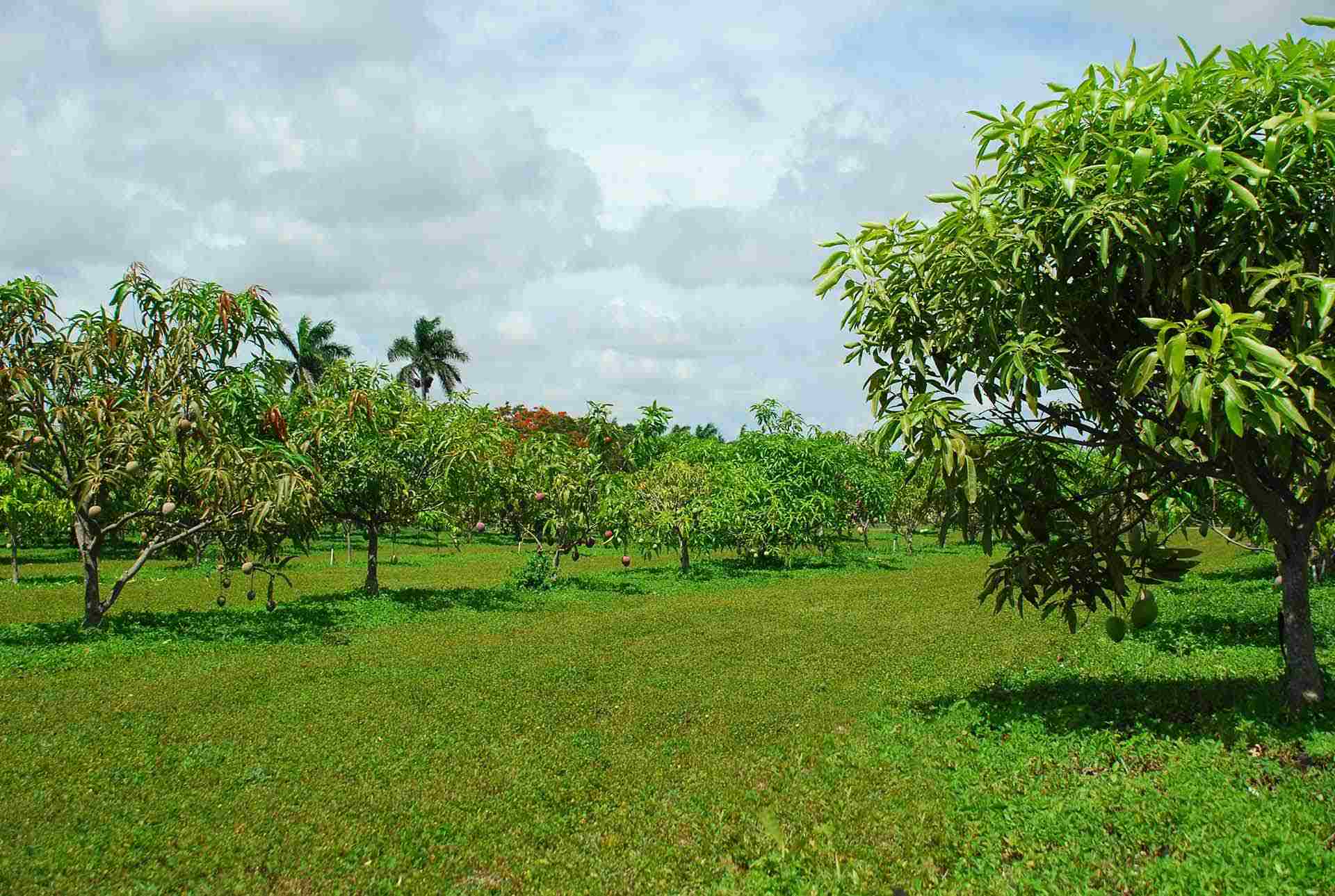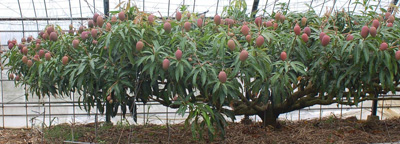Mango Trees and South Florida Are a Nice Fit

Growing, blooming and fruiting in the heat of summer, enduring the cold of winter and the fury of hurricanes, mangoes have made this land their home — the warm, southern extreme of South Florida between the ocean and the great expanse of the Everglades.
But the mango’s adopted home in South Florida is far from ideal, providing a spartan soil and rough conditions. We can, however, make South Florida a place for growing mangoes in maximum plenitude.
Every back yard in South Florida presents an opportunity to grow mangoes. There is always a place for one or two trees. Today we have small, manageable landscape trees that yield an ample harvest of beautiful and delicious fruit and disease-tolerant cultivars that provide unprecedented opportunities for organic production.

Selecting a Variety of Mango Tree for South Florida
Trees that set fruit early in the season will avoid the summer rains, and those with superior genetics through selective cultivation will ward off disease. Some early-fruiting varieties to look for include Rosigold, Angie and Manilita. These are your best bet for an early season, and should be ready by April. Fairchild, Mallika and Coghall will fruit during summer. Neelum will fruit a bit later, by the end of September.
There are simple steps you must take to make the home landscape friendly to mango trees: Get your tree in the ground in June or July, during summer rainy season. No special soil is needed. Choose a small but healthy tree. A tree in a two-gallon container is a good size. One benefit of starting with a small tree is that it will establish itself quicker and grow better roots in our rocky soils, thus resisting hurricanes.
Mango Tree Sunlight Needs
Fruit trees need good sunlight exposure. Select an area where the tree gets sufficient sunlight to ensure good fruit production. A well-maintained mango tree will develop a healthy root system. If the tree is kept to a proper size, its roots will not damage nearby pavement or building foundations. On the other hand, an unhealthy tree with a weak root system will be toppled easily by hurricane winds.
Mango Tree Water Needs
Surprisingly, mango trees like moderately dry conditions. They require irrigation just until the tree becomes established — from one to three months. Do not irrigate after it’s established. Excess irrigation will increase the tree’s vulnerability to disease and decrease the quality of its fruit. Overwatering can kill a mango tree.
When the trees are grown in harmony with their environment, their care is built on a foundation of sustainable horticulture and they don’t need the heavy hand of modern chemicals and fertilizers. It is only in this manner that mangoes can achieve greatness of character.

Fertilizing a Mango Tree
When planting, there is no need to add any fertilizer. A month after planting, fertilize lightly with a low analysis fertilizer (containing low levels of nutrients). We recommend that no nitrogen fertilizers be applied. A light layer of mulch will protect the root system and as it decomposes, will provide enough nitrogen. After that, fertilize only when your tree is active, from April to September. Do not fertilize at all during the winter. Use a 0-0-50 formulation fertilizer, sprinkled lightly below the drip-line of the canopy three times per year. Foliar micronutrients that include magnesium, zinc, and manganese will help balance out the nutritional needs of your tree, especially during fruit production.
Pruning a Mango Tree
Pruning should be your main horticultural practice, shaping your tree from a young age. Proper early pruning will provide balance for the rest of your tree’s life. The first pruning should be done to remove the terminal bud. Tipping begins in the first year and continues for the life of the tree. Trees should be tipped every 20 inches.
When pruning mango trees, you are trying to maintain height while improving flowering and fruiting. A well-managed mango tree is generally below fifteen feet tall, has a complex structure of branches and has all portions of the tree open to sunlight. It is crucial to maintain the height of your mango tree to allow for ease of fruit harvest and overall management of the tree. Prune trees for size control after harvest each year. Remember to prune by hand. The branches, twigs and leaves can be mulched in place or ground up or composted for use in other locations.

Mango Tree Insect and Weed Control
When you see insects, identify them before taking any action. Remember, insects are presumed innocent until proven guilty of damage. Most are not damaging. Pesticides should be the final option.
Allow some nearby weeds to grow to provide a nectar source for bees, flies and wasps, particularly during the spring flowering season. You can keep weeds under control through mulching and the shade provided by the trees themselves.
South Florida has become the mango’s second home, and it is our privilege and responsibility to care for the tree and fruit. Enjoy the advantage of living in South Florida: the great flavors, aromas and horticultural innovations. The mango is a fruit of great distinction, cultivated with specific objectives to improve our quality of life.
Discover everything you need to know about mangoes at Fairchild’s 22nd Annual International Mango Festival, July 12-13, 2014.
This article was written by Noris Ledesma and originally published in the Miami Herald on 7/5/14. Noris Ledesma is Curator of Tropical Fruit at Fairchild Tropical Botanic Garden. Minor changes from the print version of this article were introduced to improve readability in a digital format.
